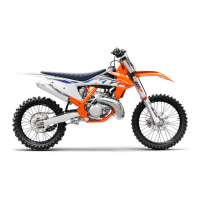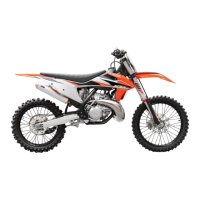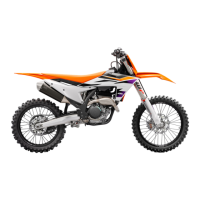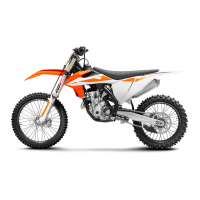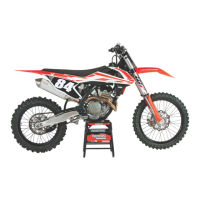COOLING SYSTEM 14
93
14.1 Cooling system
K01207-10
Water pump
1
in the engine ensures forced circulation of the
coolant.
The pressure resulting from the warming of the cooling system is
regulated by a valve in radiator cap
2
. This ensures that operat-
ing the vehicle at the specified coolant temperature will not result
in a risk of malfunctions.
14.2 Checking the antifreeze and coolant level
Warning
Danger of scalding During motorcycle operation, the coolant gets very hot and is under pressure.
– Do not open the radiator, the radiator hoses or other cooling system components if the engine or the
cooling system are at operating temperature.
– Allow the cooling system and the engine to cool down before you open the radiator, the radiator hoses
or other components of the cooling system.
– In the event of scalding, rinse the area affected immediately with lukewarm water.
Warning
Danger of poisoning Coolant is toxic and a health hazard.
– Keep coolant out of the reach of children.
– Do not allow coolant to come into contact with the skin, the eyes and clothing.
– Consult a doctor immediately if coolant is swallowed.
– Rinse the affected area immediately with plenty of water in the event of contact with the skin.
– Rinse eyes thoroughly with water and consult a doctor immediately if coolant gets into the eyes.
– Change clothing if coolant spills onto your clothing.
Condition
The engine is cold.
400243-10
– Stand the motorcycle upright on a horizontal surface.
– Remove the radiator cap.
– Check the coolant antifreeze.
−25 … −45 °C (−13 … −49 °F)
» If the antifreeze in the coolant does not match the speci-
fied value:
– Correct the coolant antifreeze.
– Check the coolant level in the radiator.
Coolant level
A
above the
radiator fins
10 mm (0.39 in)
» If the coolant level does not match the specified value:
– Correct the coolant level.
Coolant ( p. 124)
–
Mount the radiator cap.
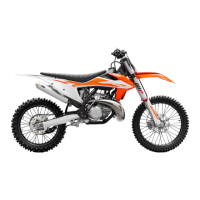
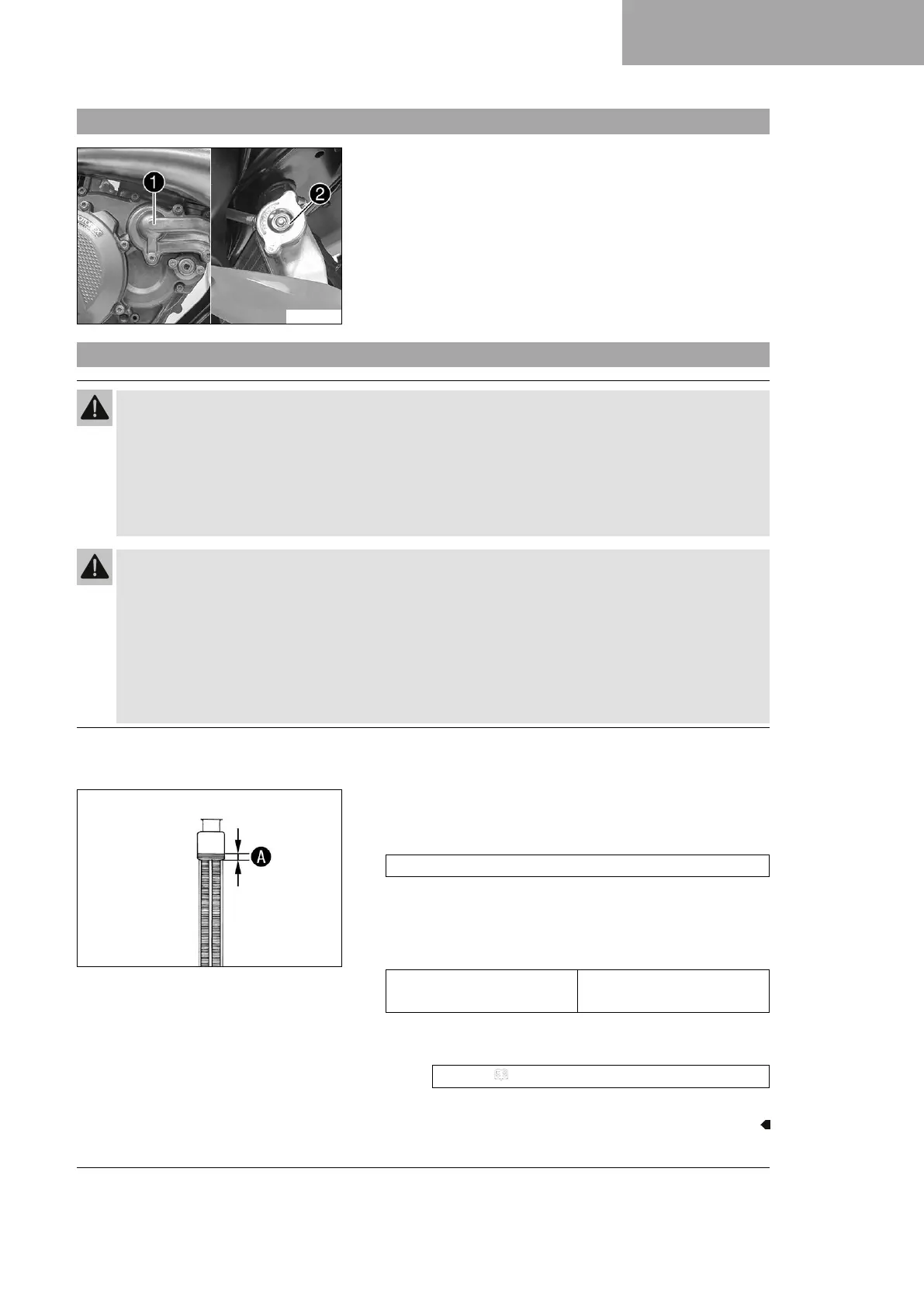